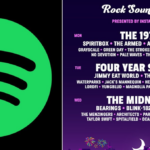In the digital age, emojis have become an essential part of online communication. One particular emoji that often raises curiosity and intrigue is the skull emoji. With its distinct shape and connotations, the skull-emoji carries various meanings. Therefore, people can use it in different contexts.
In this article, we will explore the origins, symbolism, and appropriate usage of the skull emoji. Additionally, we will be shedding light on its significance in modern communication.
Origins of the Skull-emoji
The skull-emoji, that appears as a white skull on a black backdrop, originated from the Unicode Standard, which establishes characters and symbols for textual manipulation. It made its initial debut in 2010 as an inclusion in Unicode 6.0 and has since garnered widespread acclaim on diverse platforms and social media networks.
Cultural and Historical Symbolism
Skulls have held significant symbolic significance in various cultures across time. They relate to the concepts of mortality, death, and the natural cycle of life. In certain cultural contexts, skulls embody ideas of metamorphosis, renewal, or spiritual enlightenment.
Skull emoji Meaning
In modern times, the skull-emoji has evolved beyond its traditional symbolism. The skull-emoji has acquired fresh significance influenced by the prevailing culture, memes, and online phenomena. While it remains linked to mortality, its usage context can also impart alternative sentiments and ideas.
Skull Emoji Meaning on Social Media
On social media platforms, the skull emoji often expresses extreme emotions or emphasizes intensity. It can signify astonishment, shock, or disbelief. For example, if someone shares a surprising news story or a jaw-dropping photo, you can use the skull-emoji in the comment section. It will convey a sense of amazement or awe.
Communicating Death and Danger
The skull-emoji’s traditional association with death makes it an appropriate choice when discussing topics related to mortality, danger, or the macabre. You can also use it to express condolences, remember someone who has passed away, or raise awareness about serious issues such as disease outbreaks or accidents. When used in this context, the skull-emoji serves as a visual representation of the subject matter.
Humor and Playfulness
Contrary to its somber connotations, people also use the skull-emoji humorously or playfully in certain situations. Its inclusion in memes, jokes, or comedic content can add an element of lightheartedness or sarcasm. For instance, when someone overcomes a difficult challenge or accomplishes an unlikely feat, you can use the skull-emoji humorously to express a playful sense of victory.
Halloween and Horror Themes
During Halloween or in discussions related to horror themes, the skull-emoji finds its place as a symbol of spooky and eerie atmospheres. Whether it appears in social media posts, online invitations, or party decorations, the skull-emoji can help set the tone for Halloween festivities or indicate an appreciation for horror aesthetics.
Tattoo and Goth Culture
The skull-emoji has also gained popularity within tattoo culture and among enthusiasts of the goth subculture. In tattoo art, skulls often convey strength, mortality, or rebellion. Similarly, those who identify with goth culture may use the skull-emoji. It can help them showcase the representation of their style, interests, or personal identity.
Summary
The skull-emoji, with its origins rooted in Unicode Standard, has evolved to carry multiple meanings and serve various purposes in modern communication. While it still retains its traditional associations with death and mortality, the skull-emoji has also found new roles in expressing emotions, humor, and cultural aesthetics. Understanding its diverse interpretations allows individuals to utilize the skull-emoji effectively in different contexts, ensuring their messages are conveyed accurately and in tune with the intended tone.
Conclusion: Skull Emoji Meaning
In conclusion, the skull-emoji has evolved into a multifaceted symbol with various interpretations in different contexts. Originally representing death and mortality, it now encompasses a wide range of meanings, including humor, excitement, or intensity. While it can be used to express literal death or danger, it has also found its place in pop culture, where it symbolizes coolness or rebelliousness.
Understanding when to use the skull-emoji is crucial to avoid any misinterpretations or misunderstandings. It is best employed when discussing spooky or horror-related topics, indicating a high level of amusement or excitement, or playfully conveying a sense of danger.
The beauty of emojis lies in their ability to enhance our digital communication by adding emotions and nuances to our messages. The skull-emoji, with its rich history and evolving meanings, adds a touch of creativity and expressiveness to our conversations. So, next time you find yourself contemplating whether to use the skull-emoji, remember to consider the context, audience and intended message to ensure effective and appropriate communication in the digital realm.
The skull-emoji, with its rich symbolism and multifaceted interpretations, has become a fascinating addition to digital communication. Its meaning extends beyond traditional associations with death, evolving to encompass emotions, humor, and cultural aesthetics. By understanding the diverse uses and connotations of the skull-emoji, individuals can effectively utilize it in their online interactions, creating nuanced and engaging conversations.
FAQs
1. What does the skull emoji mean?
Ans- The skull-emoji can symbolize death, mortality, shock, astonishment, intensity, humor, and Halloween themes, depending on the context.
2. Can I use the skull-emoji in serious conversations?
Ans- Yes, the skull-emoji can be used in serious conversations related to death, danger, or raising awareness about serious issues.
3. Is the skull-emoji appropriate for casual or lighthearted situations?
Ans- Absolutely! The skull-emoji can add humor, playfulness, or a touch of victory in casual or lighthearted contexts.
4. What other cultural contexts are associated with the skull-emoji?
Ans- The skull-emoji is significant in Mexican culture during the Día de los Muertos celebration and has connections to tattoo and goth subcultures.
5. How should I interpret the skull-emoji in online communication?
Ans- The skull-emoji can convey different emotions or themes, so its meaning may vary.








